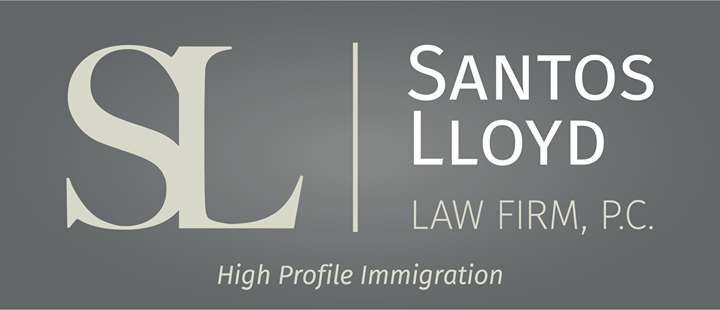¿Cómo afecta la recepción de asistencia pública mi solicitud de ajuste de estatus (AOS)?
Angelica Rice • January 26, 2023

Click here to read this article in Portuguese and English
La prueba que se utiliza para la Exención I-601A es "Dificultad extrema". Requiere que el familiar calificado demuestre que, como ciudadano de los Estados Unidos o residente permanente legal, experimentaría "Dificultad extrema" si a su cónyuge o hijo extranjero se le negara la admisión a los Estados Unidos y se denegara su solicitud de exención.
Este término, "Dificultad extrema" es muy subjetivo y USCIS considera muchos factores al determinar si existen o no dificultad extrema en un caso. Estos factores incluyen, pero no se limitan a: salud, consideraciones financieras, educación, consideraciones personales (lazos familiares) y otros factores especiales. Vea más detalles a continuación:
Salud.
Los ejemplos incluyen: Tratamiento continuo o especializado requerido por una condición física o mental, disponibilidad o calidad de dicho tratamiento en el país extranjero, duración anticipada del tratamiento, si la condición es a largo plazo y si es crónica o aguda;
Consideraciones financieras.
Los ejemplos incluyen: Empleabilidad futura, pérdida debido a la venta de una casa o negocio o terminación de una práctica profesional, una disminución en el nivel de vida, capacidad para recuperar pérdidas a corto plazo, costo de necesidades extraordinarias (como educación especial o capacitación para niños con necesidades especiales), o el costo del cuidado de miembros de la familia como ancianos o padres enfermos;
Educación.
Los ejemplos incluyen: Pérdida de oportunidades para la educación superior, menor calidad o alcance limitado de opciones educativas, interrupción de un programa actual, requisito de ser educado en un idioma o cultura extranjera con la consiguiente pérdida de tiempo o calificación, y disponibilidad de requisitos especiales, como programas de capacitación o pasantías en campos específicos;
Consideraciones personales.
Los ejemplos incluyen: parientes cercanos en los Estados Unidos y país de nacimiento o ciudadanía, separación del cónyuge o hijos, edades de las partes involucradas y duración de la residencia y lazos comunitarios en los Estados Unidos; y
Factores especiales.
Los ejemplos incluyen: obstáculos culturales relacionados con el idioma, religiosos y étnicos; temores válidos de persecución, daño físico o lesiones; ostracismo social o estigma; y la falta de acceso a instituciones o estructuras sociales (oficiales o no oficiales) que brinden apoyo, orientación o protección.
USCIS evaluará todas estas categorías al tomar una decisión sobre la solicitud I-601A. Un caso sólido I-601A proporcionará tanta evidencia como sea posible para cada categoría.
Además, la aplicación debe indicar y centrarse en uno de los dos argumentos. Una es si el Pariente Calificado permanecería en los Estados Unidos sin el cónyuge o hijo (si se deniega la solicitud). La otra es si el Pariente Calificado se mudaría al país extranjero con el cónyuge o el hijo (si se deniega la solicitud). El tipo de evidencia requerida para la solicitud I-601A, y cuál de los criterios de dificultad puede cumplir el Pariente Calificado, difiere según el argumento que se utilice. Los casos fuertes de I-601A pueden intentar hacer el argumento dual y argumentar los resultados potenciales de ambos escenarios.
Si tiene preguntas sobre cómo solicitar una exención I-601A o si este tipo de solicitud es adecuada para usted, ¡consulte a uno de nuestros experimentados abogados de inmigración!
Este blog no pretende ser un consejo legal y nada aquí debe interpretarse como el establecimiento de una relación abogado-cliente. Programe una consulta con un abogado de inmigración antes de actuar sobre cualquier información que lea aquí.

Once you have connected with a college program, have been admitted to the school, and deemed eligible to compete athletically, you will need to secure an F-1 student visa in order to actually attend your new college and begin your time as a student athlete. The first step in the visa process is to receive your Form I-2

For many talented athletes around the world, U.S. college athletics represent a remarkable opportunity to combine elite athletic competition with higher education. In sports such as basketball, soccer, track and field, and tennis, among others, hundreds of colleges and universities across the United States offer struct

Under the new regulation, if a person filed or files Form I-589, Application for Asylum and for Withholding of Removal after October 1, 2024, and the application remains pending with USCIS for 365 days, the applicant must pay an Annual Asylum Fee (AAF) on the one-year anniversary of his or her filing date.


